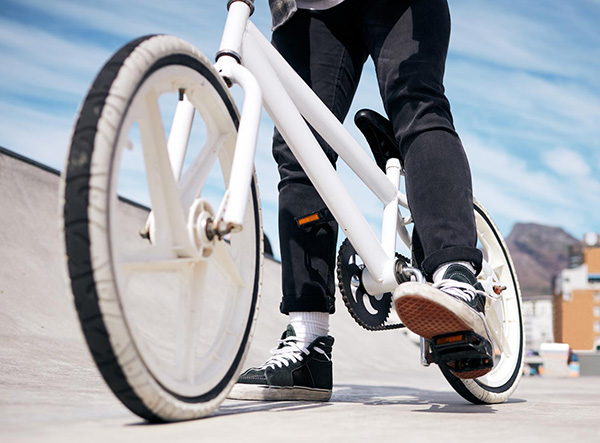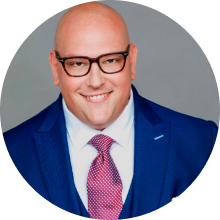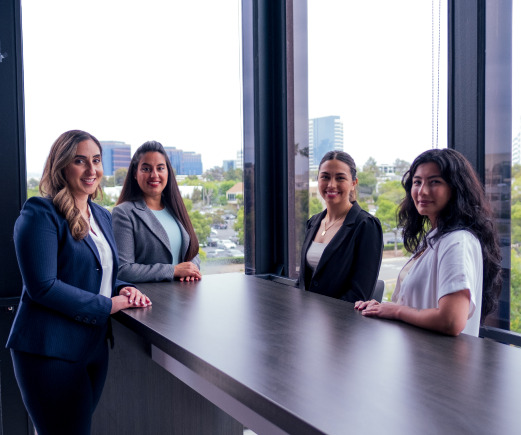
Fatal bike accidents don’t always Involve motorists
Steven Covey's fatal bike accident and what you should do to stay safe on the road
You might be familiar with the bestselling book The 7 Habits of Highly Effective People; it was to the business community in the 1990s what the KonMari method book was to home decor enthusiasts in the 2000s.
Steven R. Covey, the author, sold more than 40 million copies, and the “Covey Time Management Matrix,” which provided a framework for time management, became ubiquitous in boardrooms and classrooms worldwide. Covey went on to publish several other books about self-help and business philosophy and became a university professor and motivational speaker.
Sadly, Covey’s legacy is what remains of his unique ideas about business. In April 2012, Covey was killed in a bike accident. He was coasting down a hill when his bike flipped forward, causing Covey to hit his head on the pavement and lose consciousness. He was reportedly wearing a helmet, but it apparently slipped out of place and didn’t protect his head enough to save him.
While Covey’s accident was a tragic loss of a life well-lived, it doesn’t sound as though it was anyone’s fault—it was a true accident.
However, there are preventable bicyclist fatalities.
Bicycle accident statistics
The U.S. Department of Transportation reported that there were nearly 1,0000 bicyclist fatalities in 2020 nationwide. In 57 percent of these fatalities, the riders weren't wearing helmets.
Additionally, 88 percent of the bike accident fatalities in 2020 were men over the age of 20. This number has quadrupled since 1975, but it’s possible that it’s the proportional result of a higher number of cyclists in this demographic.
Most common causes of bike accidents with motor vehicles
There are a variety of reasons why people get hurt on the road. Here are a few of the most common:
-
- Speeding. Both motorists and bicyclists can cause accidents by going too fast.
-
- Distracted driving/riding. A distraction is more than just texting—it could be anything that takes your focus off the road and your surroundings. Always keep 1 ear “free” while bicycling; only wear 1 AirPod or earbud, and keep the other ear open so you can hear what’s happening around you.
-
- Unsafe passing. California has a 3-foot safe passing law. A motorist is required to leave at least 3 feet between the vehicle and a cyclist riding properly on the right side of the lane. However, some drivers don’t follow this law, and some circumstances make it very difficult to leave that amount of space. This can be a cause of bicycle accidents.
-
- Lack of visibility. The main reason why it’s important to ride with the correct reflectors and lights on your bike is to ensure that you can be seen by an approaching driver. Even in the daytime, weather conditions and obstructions can cause a driver to be unable to see a bicyclist, which means the cyclist needs to be aware of where cars are approaching at all times.
-
- Lane and direction changes. Blind spots and a lack of situational awareness on the road cause a significant number of bicycle collisions.
-
- Failing to yield or stop at lights and stop signs. This can be dangerous for everyone, especially at intersections, roundabouts and other high-traffic areas.
-
- Driving/riding under the influence. Just like you can’t be under the influence of drugs or alcohol while you drive a car, the same is true when you’re riding a bike. It’s illegal to ride while under the influence of alcohol or drugs, and it makes riding extremely unsafe.
-
- Dooring. "Dooring" is what happens when a driver opens their car door without looking behind them to make sure there are no approaching bicyclists. Bicyclists don't always have time to respond, which means they could hit the door or have another collision if they quickly swerve out of the way.
-
- Driver fatigue. Also known as drowsy driving, this happens when a driver or cyclist has not had enough sleep, had poor quality sleep or had too many waking hours to drive safely.
-
- Road rage. Cyclists can be on both sides of road rage, leading to aggressive driving, increased risk taking and person-to-person conflict.
-
- Rear-end collisions. Motorists and cyclists can both misjudge distances during a stop, which may lead to accidents.
- Blind spots. Blind spots can impact anyone during turns, lane passes, direction changes and parking. Bicyclists are at an increased risk of getting caught in blind spots since they're smaller than the cars that drivers expect to see on the road.
Safety tips for bicyclists
A lot of cyclists think their biggest threat is from motor vehicles. However, most bike accidents happen when the rider falls without contact with a vehicle. Bicycle/bicycle and bicycle/dog collisions cause a large percentage of reported injuries.
These safety tips can help keep you free from injury:
-
- Ensure the safety of bikes and biking equipment. Bikes should be checked and maintained regularly. Inflate tires, test brakes, lubricate chains and adjust frames and handlebars.
-
- Learn basic riding skills. It's easy to hop on a bike and take off, but it's a better idea to slow down and master basic riding skills. These include (but are not limited to) braking, signaling turns, navigating obstacles and looking over the shoulder or under the arm while still having control over the bike.
-
- Practice defensive riding. Defensive riding is a skill that bicyclists can use to prevent accidents. Strategies include things like maintaining safe distances behind cars, making eye contact with drivers before merging, and anticipating opening doors from parked cars.
- Invest in safety equipment. Helmets aren't the only protective equipment that bikers can buy. They can also use lights, bells, mirrors and other accessories to make themselves more visible and audible on the road.
Who to call after a California bike accident
If you were injured in a California bike crash, MVP Accident Attorneys are ready to handle your insurance claim or lawsuit. Our firm has recovered millions of dollars for our thousands of satisfied clients. Contact us today for a free consultation.
Author

Brett Sachs
Brett S. Sachs graduated from Michigan State University College of Law with Cum Laude Honors. While attending Michigan State, Brett was awarded for his service in the Michigan State University College of Law Civil Rights Clinic, where he represented prisoners of the Michigan Department of Corrections from injustices brought upon them. Learn more.
Top-Rated Lawyers

Lizbhett Rodriguez
Jason Acosta

When You’ve Been Injured
Personal Injury Law

